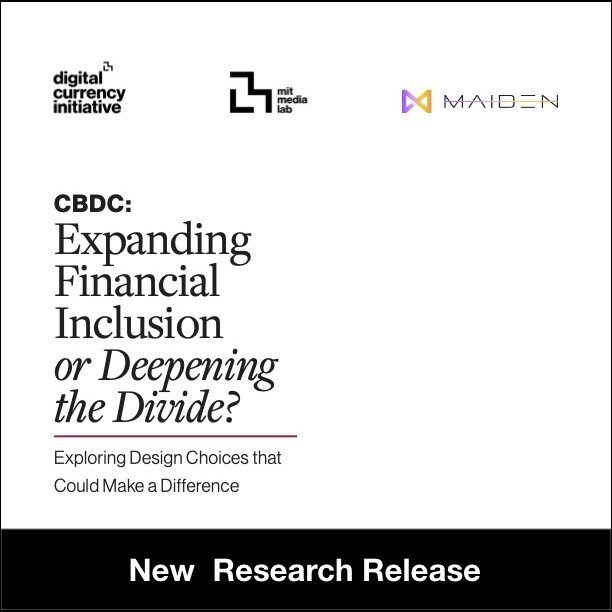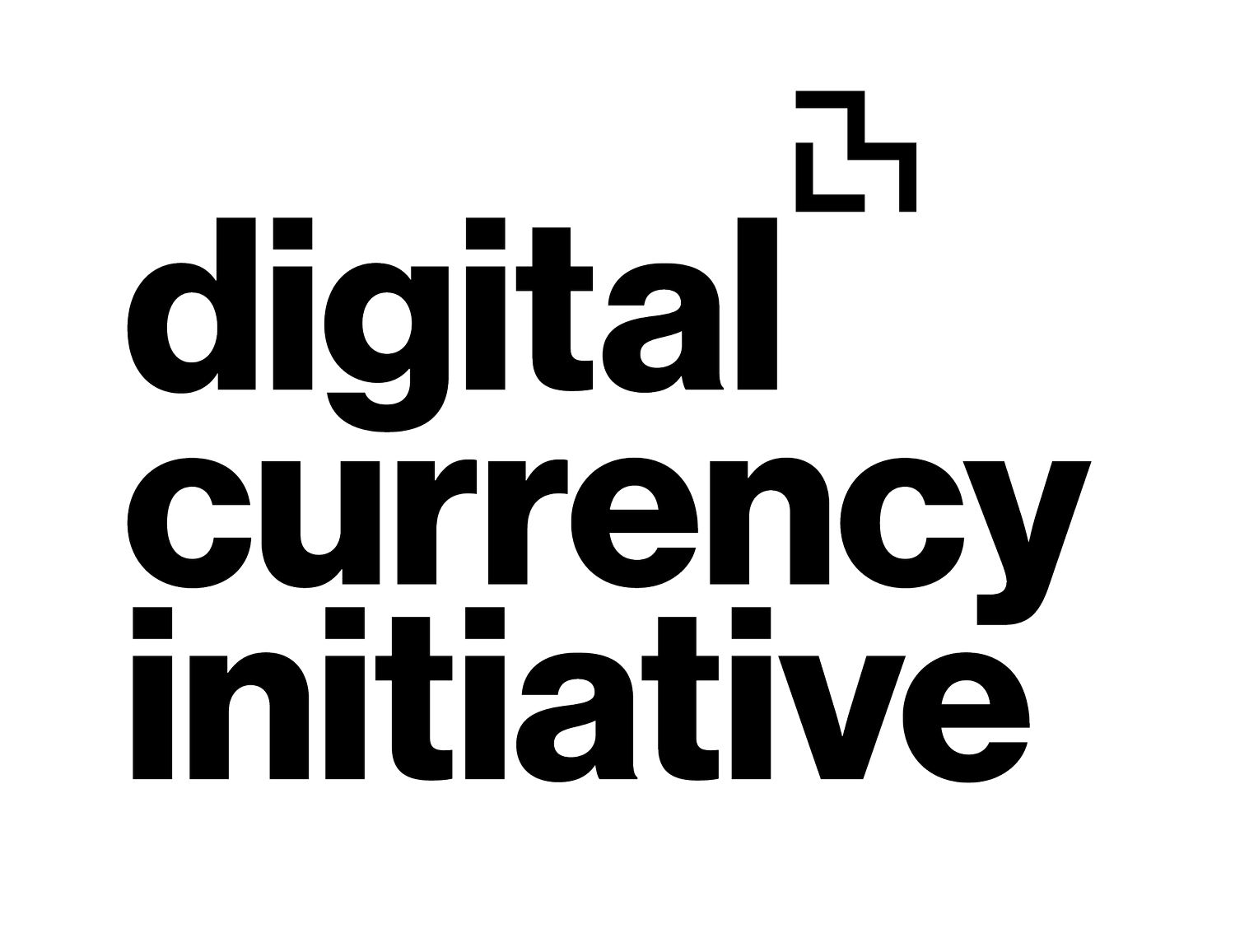
Ledger Insights: “Digital Pound paper explores privacy enhancing technologies for CBDC”
“In the West there has been significant resistance to the concept of retail central bank digital currencies (CBDC) based on ‘Big Brother’ concerns. In other words, privacy fears that the government can monitor personal payment transactions. Or sometimes, even concerns that they might attempt to control behaviors. Hence, the Bank of England and the Massachusetts Institute of Technology Digital Currency Initiative (MIT DCI) published a paper exploring privacy enhancing technologies (PETs) for a possible digital pound.”

MIT DCI Hosts a Fireside Chat with Dr. Agustín Carstens, General Manager of the Bank for International Settlements
Why does innovation in financial services matter to everyone, and how can the public sector support its advancement? On Thursday, September 26, MIT’s Digital Currency Initiative was privileged to host a visit and fireside chat at the Media Lab on these questions and on the future of money with Dr. Agustín Carstens, General Manager of the Bank for International Settlements in Basel, Switzerland.

MIT Digital Currency Initiative presents CBDC research to Ireland's IIEA
In October, former central banker Chris Calabia of MIT’s Digital Currency Initiative (MIT DCI) gave a talk at The Institute of International & European Affairs titled “Towards a Central Bank Digital Currency? One View from the United States.”
In this, the second of the IIEA’s mini-series of webinars on the subject of central bank digital currencies (CBDCs), Chris Calabia, Head of CBDC Programs at the Massachusetts Institute of Technology (MIT) Digital Currency Initiative, shares recent research on the opportunities and challenges presented by the potential introduction of a CBDC like a ‘digital dollar’. Mr. Calabia addresses practical and policy questions that this digital asset could raise for our economies and societies, including whether CBDCs could promote greater financial inclusion and how to safeguard privacy while mitigating other risks like fraud and money laundering.

Ledger Insights: “MIT’s Project Hamilton for CBDC open sources smart contract research”
“This week MIT’s Digital Currency Initiative (MIT DCI) released the source code of research into smart contracts for central bank digital currency (CBDC) – PArSEC (Parallelized Architecture for Scalably Executing smart Contracts). Given the solution is designed for central banks, it is a centralized offering and sidesteps using blockchain, although it supports Ethereum smart contracts. “

Cointelegraph: “MIT Digital Currency Initiative introduces at-scale, programmable CBDC platform”
“The Massachusetts Institute of Technology (MIT) Digital Currency Initiative (DCI) has introduced the experimental PArSEC platform. PArSEC — short for "parallelized architecture for scalably executing smart contracts" — is open source and developed with central bank digital currency (CBDC) in mind. “

Engaging with regulators, insights from near and afar: an interview with Chris Calabia in The Axial Studio
DCI senior advisor Chris Calabia was interviewed on his experience as a regulator, his advice for innovation, and more. Chris worked for over twenty years at the Federal Reserve Bank of New York. Through that role and others, including as a Senior Advisor on regulatory policy at the Bill & Melinda Gates Foundation, Chris has worked closely with regulators from all of the world, providing him a unique perspective not only into the mindset of US regulators, but regulators in many different socioeconomic contexts.

The Future of Money at Consensus 2023
On April 27, DCI director Neha Narula spoke at Consensus 2023 on private and public money and the role of blockchain technology in future digital payment systems.

Project Hamilton at NSDI '23
James Lovejoy, of the Federal Reserve Bank of Boston, presented "Hamilton: A High-Performance Transaction Processor for Central Bank Digital Currencies" at NSDI '23. This paper was co-authored by Madars Virza, Cory Fields, and Neha Narula of the DCI and James Lovejoy, Kevin Karwaski, and Anders Brownworth of the FRBB, and it proposes the Hamilton transaction processor, one of the primary results of this collaboration.
The featured image on this post is by Thomas Hawk, and used under a Creative Commons license.

In the Face of Fragility: Central Bank Digital Currencies
On Tuesday, January 17th at the World Economic Forum in Davos, Switzerland, Axios markets reporter Courtenay Brown and MIT Media Lab Digital Currency Initiative director Neha Narula considered the most pressing issues facing cryptocurrency today including how (and if) the industry should be regulated, how governments and financial institutions should interact with the sector, and how investments could be safeguarded. The View from the Top sponsored segment featured Ripple chief executive officer Brad Garlinghouse.

OMFIF: "CBDCs present new opportunities for handling disputes and fraud" by DCI Team Members
Potential designs may involve intermediaries in new and different ways
Central bank digital currencies potentially offer, in a digital form, the advantages of central bank money: settlement finality, liquidity and integrity. However, both offline and online commerce are susceptible to fraud and other kinds of disagreements. The existing techniques for managing fraud and disputes focus on giving users easy access to chargebacks, which relies on intermediaries to resolve disputes. Potential designs for CBDC may involve intermediaries in new and different ways, or may not use intermediaries at all, calling into question how to address fraud if CBDCs become widely used.

CoinDesk’s Money Reimagined: "Back to Basics After ‘Token Casinos’ Wreaked Havoc, With Neha Narula"
On this episode of “Money Reimagined,” Michael Casey, solo in Davos, Switzerland, on the sidelines of the World Economic Forum, speaks with Neha Narula, the director of the MIT Digital Currency Initiative to discuss the trends of both digitalization and innovation pertaining to stablecoins, digital currencies and the future of public money,

Nicolas Xuan-Yi Zhang, "A Multi-Currency Exchange and Contracting Platform"
The DCI’s Nicolas Xuan-Yi Zhang coauthored a paper at IMF on multi-currency exchange.
Cross-border payments can be slow, expensive, and risky. They are intermediated by counterparties in different jurisdictions which rely on costly trusted relationships to offset the lack of a common settlement asset as well as common rules and governance. In this paper, we present a vision for a multilateral platform that could improve cross-border payments, as well as related foreign exchange transactions, risk sharing, and more generally, financial contracting. The approach is to leverage technological innovations for public policy objectives. A common ledger, smart contracts, and encryption offer significant gains to market efficiency, completeness, and access, as well as to transparency, transaction and compliance costs, and safety. This paper is a first step aiming to stimulate further work in this space.

MIT, Maiden Labs examine CBDC inclusiveness issues in report from 4 countries
The Massachusetts Institute of Technology (MIT) Digital Currency Initiative (DCI) and associated organizations marshaled a sizable team of researchers in four low- and middle-income countries — India, Indonesia, Nigeria and Mexico — to study inclusion issues related to retail central bank digital currency (CBDC) design. They released the results of their 15-month research project on Jan. 13.

CoinDesk’s Money Reimagined "The Coming Digital Currency War
A Consensus panel from Austin, Texas, "Money Reimagined" host Michael Casey starts off the introductions of an important discussion with Emily Parker, CoinDesk's executive director of global content; the Honorable J. Christopher Giancarlo, dubbed “CryptoDad,” served as 13th Chairman of the United States Commodity Futures Trading Commission; and Neha Narula is the Director of the Digital Currency Initiative at the MIT Media Lab, to discuss the social and geo-political implications of the rise of international competition between central bank digital currencies, stablecoins and native crypto currencies.

MIT Technology Review: “The MIT researcher who helps senators understand digital currencies“
Last summer, a special subcommittee of the US Senate met remotely to weigh the benefits of launching a central-bank digital currency, or CBDC—something that could, if optimally designed, transform the US financial system, making it more accessible to more citizens. For senators staring intently at their laptops, this was basically the first day of digital-currency school. And to introduce them to this highly technical world, the first witness that Senator Elizabeth Warren called was MIT Digital Currency Initiative director Neha Narula.

MIT Digital Currency Initiative (DCI) announces research collaboration with the Bank of England on central bank digital currency
The Bank of England announced an agreement to collaborate on a twelve-month Central Bank Digital Currency (CBDC) research project with MIT Digital Currency Initiative. The agreement supports and builds on DCI’s ongoing research into CBDC, while also contributing to the Bank of England’s wider research and exploration of central bank digital currencies. While no decision has been made on whether or not to introduce a CBDC in the UK, the work will investigate and experiment with potential CBDC technology designs and approaches, and evaluate key tradeoffs, opportunities, and risks. This type of research can help inform wider policy development by contributing important technical ideas and questions.

MIT Digital Currency Initiative (DCI) announces research collaboration with the Bank of Canada on central bank digital currency
Today, the Bank of Canada announced an agreement to collaborate on a twelve-month CBDC research project with the MIT Digital Currency Initiative. The agreement supports and builds on the DCI’s ongoing research into CBDC, while also contributing to the Bank of Canada’s wider research agenda into digital currencies and fintech. The work will investigate and experiment with potential CBDC technology designs and approaches, and evaluate key tradeoffs, opportunities, and risks. While no decision has been made on whether or not to introduce a CBDC in Canada, this type of research can help inform wider policy development by contributing important technical ideas and questions.

MIT DCI Releases Project Hamilton, OpenCBDC Papers and Open Source Code Base
Read the technical paper, A High Performance Payment Processing System Designed for Central Bank Digital Currencies, and executive summary here.

MIT News: "MIT experts test technical research for a hypothetical central bank digital currency"
Collaboration with Federal Reserve Bank of Boston yields progress in understanding how a digital currency might be developed in the future.
CAMBRIDGE, Mass. -- In collaboration with a team at the Federal Reserve Bank of Boston, MIT experts have begun designing and testing technical research through which further examination of a Central Bank Digital Currency (CBDC) can be performed in the U.S.
The effort, known as Project Hamilton, is in an exploratory phase, and the research is not intended as a pilot or for public deployment. Instead, the researchers have explored two different approaches that could be used to process transactions, and thus could indicate the technical feasibility of a potential CBDC model. In a process involving significant design flexibility, the MIT group tested factors such as the volume and speed of transactions, and the resilience of the systems in general, among other requirements for a viable digital currency.

"Why Central Bank Digital Currencies?" in Federal Reserve Bank of New York's Liberty Street Economics
DCI Director Neha Narula co-authored the piece, "Why Central Bank Digital Currencies?" published in the Federal Reserve Bank of New York's Liberty Street Economics
“In the past year, a number of central banks have stepped up work on central bank digital currencies (CBDCs – see map). For central banks, are CBDCs just a defensive reaction to private-sector innovations in money, or are they an opportunity for the monetary system? In this post, we consider several long-standing goals of central banks in their support and provision of retail payments, why and how central banks tackle these issues, and where CBDCs fit into the array of potential solutions.”
